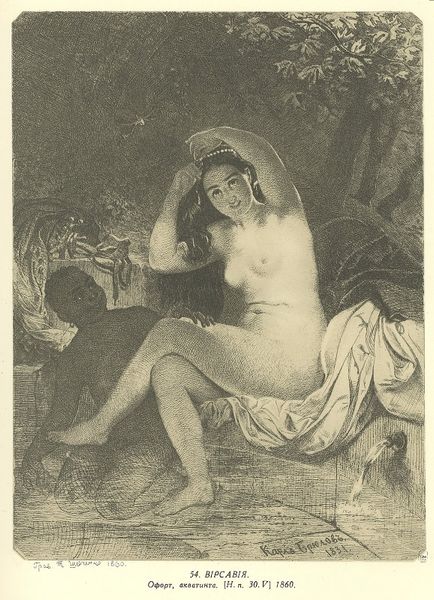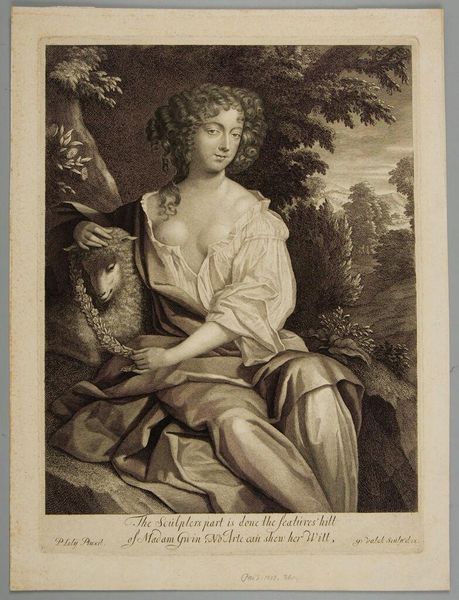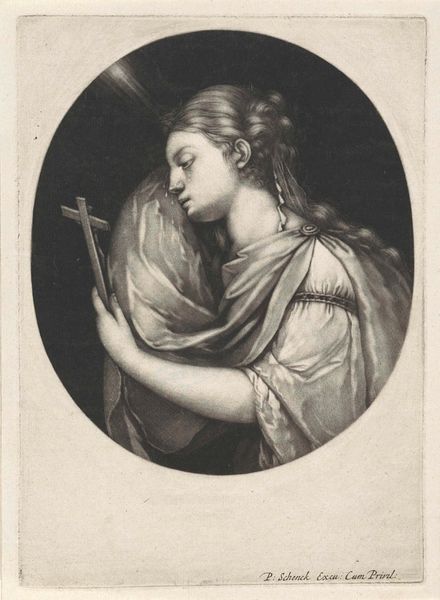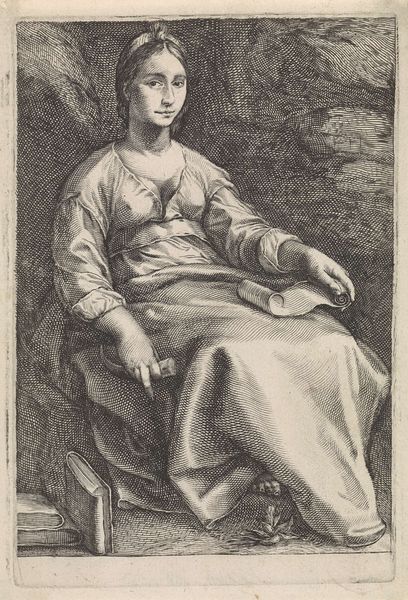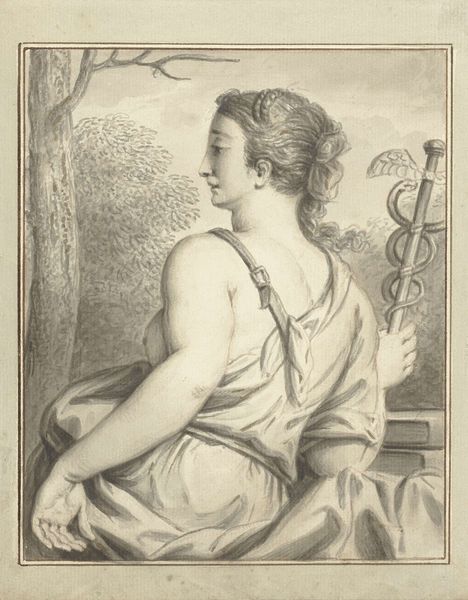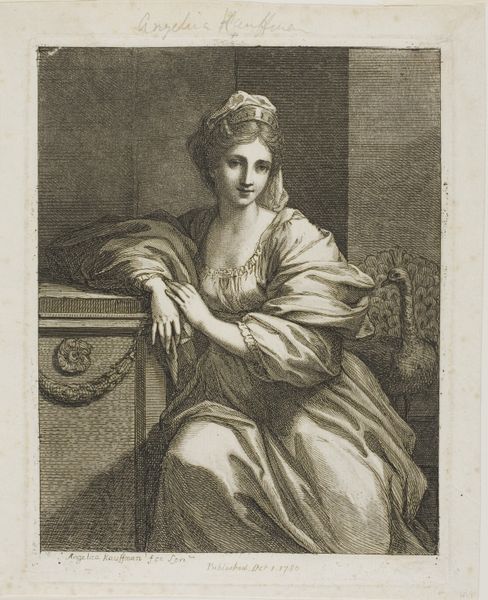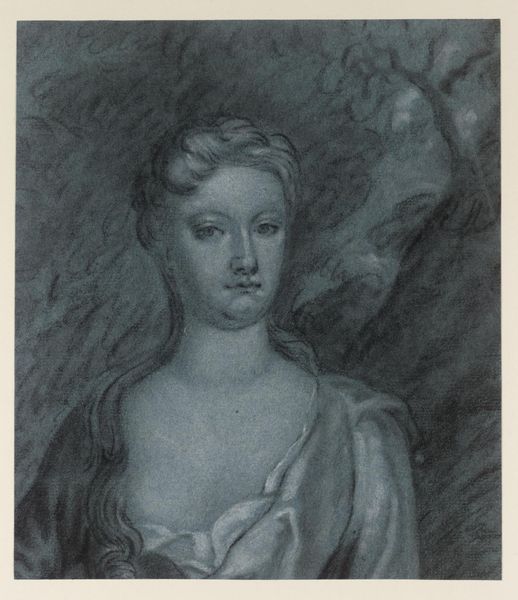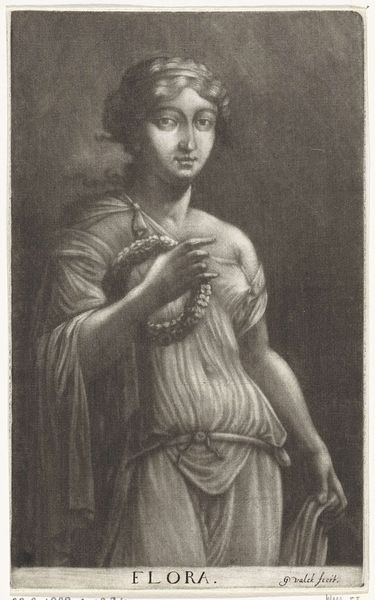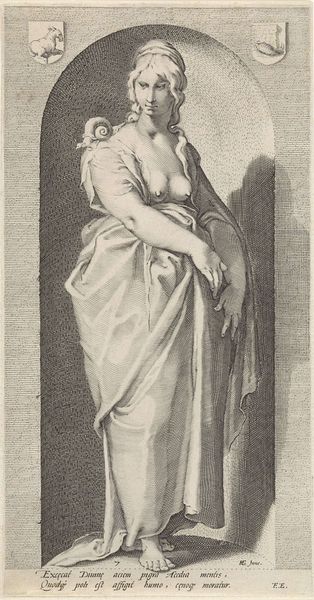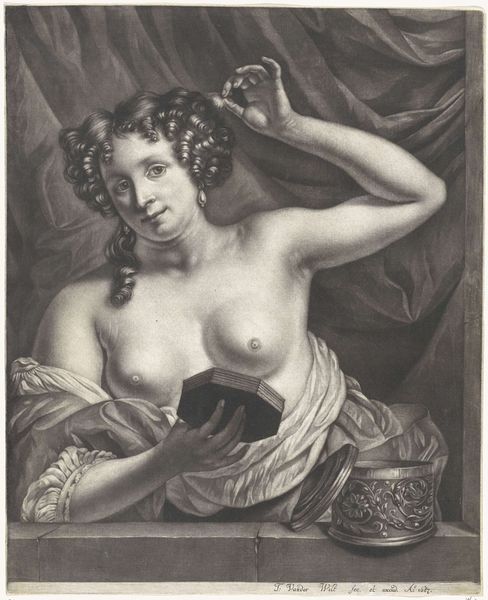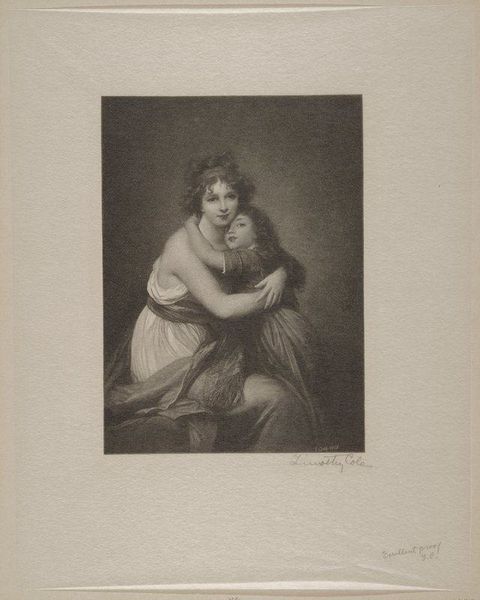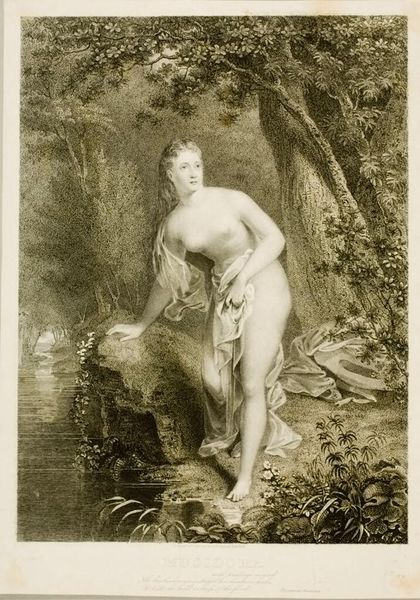
Lady Hamilton as ‘Neæra’ 1788
Copyright: Public domain
John Hoppner captured Lady Hamilton as 'Neaera,' employing soft lines to emphasize her beauty. Neaera, in antiquity, was a common name for courtesans, suggesting both beauty and availability. Here, Lady Hamilton is depicted with a semi-transparent veil, a motif that recurs throughout art history. In classical sculpture, the veil often symbolizes purity, secrecy, or transformation. Consider the veiled figures in ancient Roman funerary art, where the veil signifies the transition from life to death. Yet, in the Renaissance, we see the veil transformed, sometimes suggesting hidden sensuality. Here, the veil adds an ethereal quality, enhancing her allure while hinting at hidden depths. This interplay of revelation and concealment engages our subconscious, drawing us into a dance of desire and mystery. The veil becomes a powerful psychological symbol, reflecting our complex attitudes toward beauty, sexuality, and the ephemeral nature of human existence. Thus, Lady Hamilton, veiled, connects us to an ancient visual language—a language that continues to evolve.
Comments
No comments
Be the first to comment and join the conversation on the ultimate creative platform.
